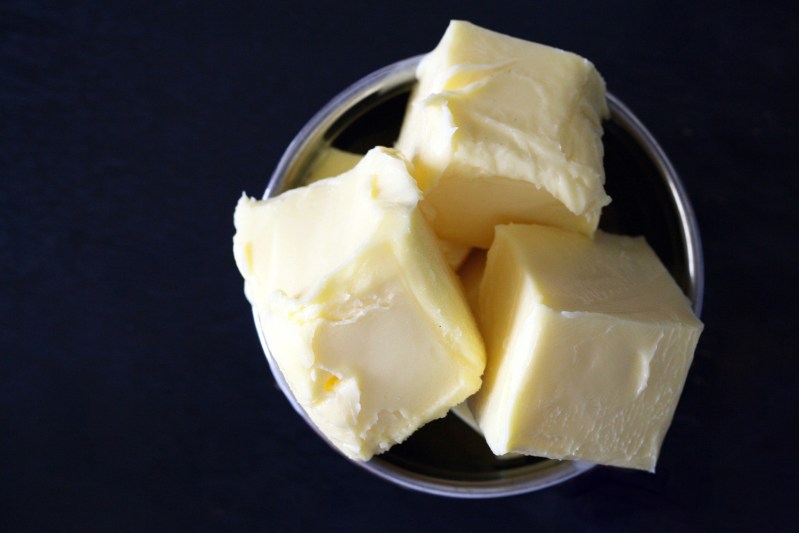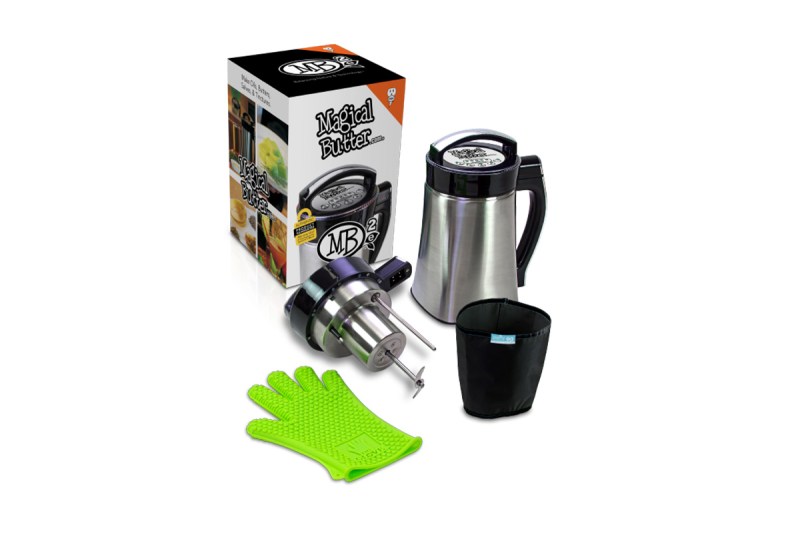
Have you ever been to a nice restaurant and indulged in the joy that is a plate of different butters? Depending on the type of roll, you might be able to use regular butter, rosemary butter, or some other equally-delicious concoction. The flavors that come through an infused butter are subtle, but they are there, adding a new level of flavor to whatever you’re consuming. In certain circumstances, the infused ingredient also may add more than just flavor to a dish, creating an even higher level of enjoyment.
Get it?
If you don’t know what you’re doing, though, infusing butter can be a messy, unfulfilling experience. Not only might you not end up with a tasty butter to show off the next time you have a date over, but you’ll waste herbs and butter in the process. One company, though, is trying to change that by introducing a home butter infuser that makes the process as simple as can be.

The MB2e by MagicalButter is a countertop botanical extractor (essentially made by combining an immersion blender, digital thermostat, and heating unit) that allows you to make butter, oils, or tinctures with the push of a few buttons (and some time in a fridge for the butter to set up). After adding your ingredients, the MB2e does it all: grinding, heating, stirring, and steeping at the proper temperature and time until it is ready to go.
Not only does the MB2e make the process simple, but it also makes it consistent. Now, if you’re into making herbal butters of any sort, you don’t have to worry about one batch being more potent than another.
Does the potential for delicious herbal butter sound as enticing to you as it did to us? Check out MagicalButter’s recipe below. (You can also check out the video here.)
How to Make Magical Butter
Cook time: 2 hours
Yield: Approximately 2-5 cups/475-1180 ml
Ingredients:
- .25-.5 oz/7-14 g botanicals per cup/240 ml*, decarbed (more on decarbing here)
- 2-5 cups/475-1180 ml unsalted butter, softened (for best results, clarified**)
- 1 tbsp/15 ml lecithin per cup/240 ml***
Note: Minimum is 2 cups/475 ml. Maximum capacity 5 cups/1180 ml. Do not use margarine or water.
Method:
- Place the ingredients into your MagicalButter machine, and secure the head.*
- Press the Temperature button, and select 160°F/71°C. Then press the 2 Hours/Butter button.
- After the cycle is complete, unplug the unit at the outlet, and remove the head of the appliance. Put on your LoveGlove™, and pour the pitcher contents slowly through your PurifyFilter™ into MagicalButter Trays, formed molds, or other storage container.
Chef’s notes:
* For best results do not pre-grind botanicals. Adjust botanical weight according to personal preference.
** For optimal extractions and maximum potency, based on extensive kitchen trials, our chef now recommends clarifying your butter before adding it to the pitcher. To clarify, gently melt and simmer the butter, discard the milk solids and surface foam, and retain the clear golden liquified butterfat. You can also skip clarifying and simply use melted or softened butter. Do not use cold, firm butter.
*** Lecithin is optional but highly recommended. Lecithin is an emulsifier used in cooking and in the pharmaceutical industry for binding ingredients in lipids (butter, oils, and fats). It helps to increase the bioavailability of plant compounds in your high-lipid infusions, intensifying the potency of the resulting extracts. Lecithin can be made from soy, sunflower, rice, or egg yolk. It is available at your local health-food or vitamin store in the form of powder, granules, or liquid. Any type is sufficient except in capsules because they contain too many binders and fillers. Soy lecithin powder is processed to eliminate compounds that may have estrogen-like effects. Lecithin granules are made from soy powder mixed with soy oil, so they may contain estrogen-like compounds. Because liquid lecithin is three times as potent as powder or granules (it’s also three times as messy), use only 1 teaspoon per cup of butter or oil for your extractions.
If you’re looking for other recipes, or simply looking to see what all the MB2e is capable of, you can check out their entire registry of recipes here. They’ve got everything from butter and infused oils to
The MagicalButter MB2e retails for $175 and can be purchased here:
Article originally published January 9, 2019.





